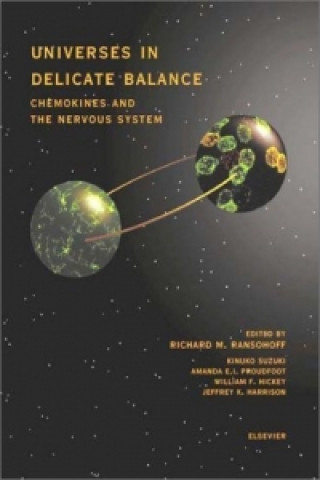
Kod: 04611031
Universes in Delicate Balance: Chemokines and the Nervous System
Autor R. M. Ransohoff, K. Suzuki, A. E. I. Proudfoot
It is commonly acknowledged that the nervous system and the immune system, those most complex of networks, share attributes beyond their intricacy. Elements common to the two systems include memory, connectivity, flexibility and d ... więcej
- Język:
 Angielski
Angielski - Oprawa: Twarda
- Liczba stron: 404
Wydawca: Elsevier Science & Technology, 2002
- Więcej informacji o książce

342.54 €
Dostępność:
50 % szansa Otrzymaliśmy informację, że książka może być ponownie dostępna. Na podstawie państwa zamówienia, postaramy się książkę sprowadzić w terminie do 6 tygodni. Gwarancja pełnego zwrotu pieniędzy, jeśli książka nie zostanie zabezpieczona.
Otrzymaliśmy informację, że książka może być ponownie dostępna. Na podstawie państwa zamówienia, postaramy się książkę sprowadzić w terminie do 6 tygodni. Gwarancja pełnego zwrotu pieniędzy, jeśli książka nie zostanie zabezpieczona.Przeszukamy cały świat
Zobacz książki o podobnej tematyce
-

Nachtrags-Statistik Der Elektrizit tswerke in Deutschland
73.79 € -

Angry Women
12.52 € -22 % -

Announcing a Flight Delay
14.73 € -2 % -

Female Genital Prolapse and Urinary Incontinence
253.79 € -

Practical Guide to Security Engineering and Information Assurance
159.03 € -

Musica Tejana
26.46 €
Podaruj tę książkę jeszcze dziś
- Zamów książkę i wybierz "Wyślij jako prezent".
- Natychmiast wyślemy Ci bon podarunkowy, który możesz przekazać adresatowi prezentu.
- Książka zostanie wysłana do adresata, a Ty o nic nie musisz się martwić.
Powiadomienie o dostępności
Wpisz swój adres e-mail, aby otrzymać od nas powiadomienie,
gdy książka będzie dostępna. Proste, prawda?
Więcej informacji o Universes in Delicate Balance: Chemokines and the Nervous System
Za ten zakup dostaniesz 864 punkty
 Opis
Opis
It is commonly acknowledged that the nervous system and the immune system, those most complex of networks, share attributes beyond their intricacy. Elements common to the two systems include memory, connectivity, flexibility and developmental selection of cellular composition by a rigorous process involving widespread programmed cell death. There is one salient difference: the cells of the immune system are predominantly in constant motion, while post-mitotic neurons and glia are largely fixed in place. Therefore, chemokines, initially characterized as leukocyte chemoattractants, have for the last one and one-half decades been intensely and productively studied in the contexts of inflammation, immunity and hematopoietic development. Only recently have the two fields, neurobiology and immunology, displayed mutual interests in chemokines. This convergence of the two tribes of investigators was catalyzed by the finding that SDF-1 (now known as CXCL12) and its receptor, CXCR4, exerted significant and similar functions in development of both nervous and immune systems. Indeed CXCL12 and CXCR4 were required, in an uncannily similar fashion, for retention of pre-B lymphocytes at sites of maturation in the bone marrow and of neuronal progenitors in the external granule cell layer of the developing cerebellum. Recent reports indicate that chemoattraction of cerebellar granule cells through CXCR4 can be suppressed by reverse signaling initiated by binding of soluble eph receptors to transmembrane ephrin B, thereby establishing a link between chemokine action and a cardinal patterning system of the developing nervous system. As may be anticipated when a dam breaks, a massive influx of correlative observations in the nervous and immune systems is likely to ensue. This volume represents the state of current knowledge. To this end, introductory material for both systems is provided. Basic and advanced 'chemokinology' are presented. The recipe for making a nervous system (both ingredients and instructions for preparation) is described, as are the roles of chemokines and their receptors in making an immune system. Given their importance and complexity, CXCL12/CXCR4 interactions are separately treated in varying contexts. The field of 'neurobiology of chemokines' has not lain fallow during the last ten years. During much of this time the principal focus has been on neuroinflammation. Linking the immune and nervous systems are explanations of the functions of chemokines and their receptors for resident brain macrophages, the microglia, the unique cerebrovascular endothelium and angiogenesis. Understanding human disease is the goal of much of this research. New discoveries are being made and reported at a gratifying rate. It is expected that this volume will promote the steady production and application of useful new knowledge in this developing field. It provides a unique single-source database for basic neurobiology highlighting the fundamental aspects of chemokines and discussing the relations of chemokine science to animal models and human disease.
 Szczegóły książki
Szczegóły książki
Kategoria Książki po angielsku Mathematics & science Biology, life sciences Biochemistry
342.54 €
- Pełny tytuł: Universes in Delicate Balance: Chemokines and the Nervous System
- Autor: R. M. Ransohoff, K. Suzuki, A. E. I. Proudfoot
- Język:
 Angielski
Angielski - Oprawa: Twarda
- Liczba stron: 404
- EAN: 9780444510020
- ISBN: 0444510028
- ID: 04611031
- Wydawca: Elsevier Science & Technology
- Waga: 1120 g
- Wymiary: 279 × 210 mm
- Data wydania: 29. April 2002
Ulubione w innej kategorii
-
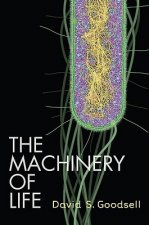
Machinery of Life
31.88 € -16 % -

Female Brain
17.14 € -10 % -

Biochemistry: A Very Short Introduction
9.01 € -23 % -

Biochemistry, Fourth Edition International Adaptation
71.49 € -7 % -

Wilson and Walker's Principles and Techniques of Biochemistry and Molecular Biology
59.55 € -

Ice Cream
103.08 € -

Modern Optical Spectroscopy
105.78 € -4 % -

Schaum's Outline of Biochemistry, Third Edition
29.97 € -19 % -

DHEA Breakthrough
8.21 € -18 % -

Voet's Principles of Biochemistry, 5th Edition Glo bal Edition
71.49 € -7 % -

Biochemistry and Molecular Biology of Plants 2e
128.45 € -8 % -

Exercise Biochemistry
131.05 € -13 % -
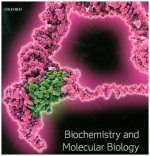
Biochemistry and Molecular Biology
69.08 € -
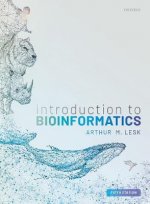
Introduction to Bioinformatics
60.26 € -6 % -
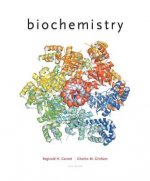
Biochemistry
106.58 € -

BIOS Instant Notes in Biochemistry
34.49 € -4 % -

Biochemistry
389.47 € -

Protein Structure and Function
92.15 € -4 % -

Medical Biochemistry Principles for Medical Students
21.55 € -

Cell: A Very Short Introduction
9.22 € -28 % -

Plant Biochemistry
118.22 € -

Environmental Soil Biology
115.01 € -

Polar Lipids
128.95 € -

Advanced Molecular Genetics
169.66 € -

Biochemistry
52.84 € -

Introduction to Protein Structure
108.99 € -

Marks' Essentials of Medical Biochemistry
60.36 € -9 % -
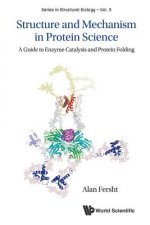
Structure And Mechanism In Protein Science: A Guide To Enzyme Catalysis And Protein Folding
89.94 € -

Sensory Evaluation of Food
84.32 € -13 % -

Pulp and Paper Industry
190.92 € -

Introduction to Proteins
111.80 € -4 % -

Introduction to Protein Science
76.40 € -4 % -

Medical Biochemistry
157.02 € -
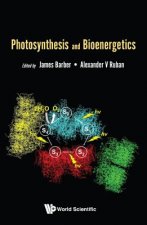
Photosynthesis And Bioenergetics
141.18 € -

Case Files Biochemistry 3/E
49.13 € -

Essentials of Glycobiology, Third Edition
182.90 € -

Exploring Proteins
62.06 € -

Biochemistry of Lipids, Lipoproteins and Membranes
111.60 € -

Chemistry and Biochemistry of the Amino Acids
103.68 € -

Bioavailability, Leachability, Chemical Speciation, and Bioremediation of Heavy Metals in the Process of Composting
148.60 € -

Introduction to Bioorganic Chemistry and Chemical Biology
101.27 € -4 % -

Proteomics Protocols Handbook
347.95 € -

Protein Engineering Techniques
58.35 € -

Bioenergetics
82.92 € -4 % -

Chemistry of Life
13.13 € -28 % -

Growth Hormone Secretagogues in Clinical Practice
421.46 € -

Textbook of Biochemistry with Clinical Correlations
315.06 € -

Ligands
242.66 € -17 % -

GHRH, GH, and IGF-I
228.32 €
Osobní odběr Bratislava a 2642 dalších
Copyright ©2008-24 najlacnejsie-knihy.sk Wszelkie prawa zastrzeżonePrywatnieCookies


 Vrácení do měsíce
Vrácení do měsíce Zdarma od 49.99 €
Zdarma od 49.99 € 02/210 210 99 (8-15.30h)
02/210 210 99 (8-15.30h)